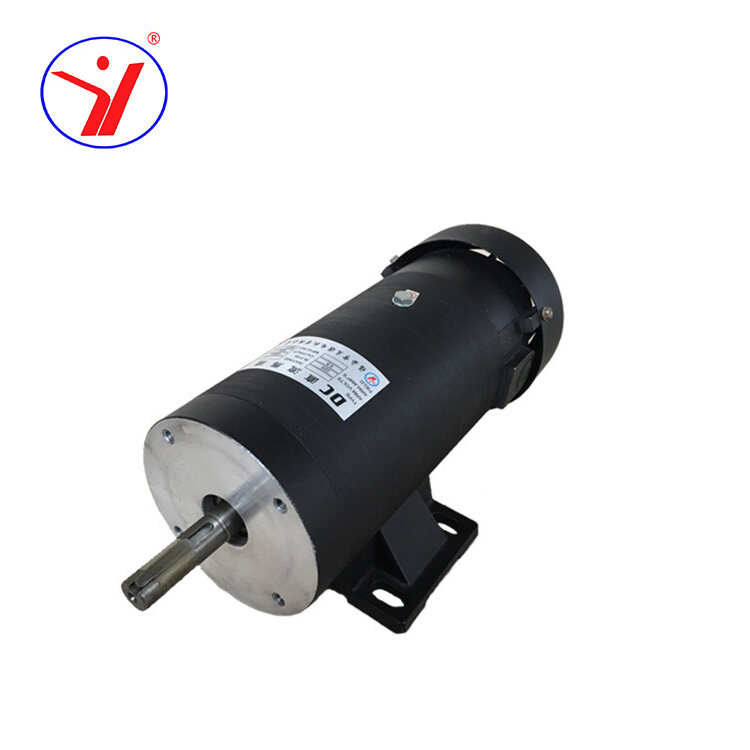Exploring the Power of High Voltage Low RPM Permanent Magnet DC Motors
The demand for efficient and powerful electric motors has never been higher in today's rapidly evolving technological landscape. Among the many types of electric motors, the high voltage low RPM permanent magnet DC motor stands out for its remarkable performance and versatility. In this blog post, we delve deep into the intricacies of these motors, exploring their design, applications, and advantages.
Understanding High Voltage Low RPM Permanent Magnet DC Motors
Electric motors are integral to numerous industries, driving everything from industrial machinery to electric vehicles. Among the various types of electric motors, the permanent magnet DC motors stand out for their unique characteristics and applications.
Construction and Components
High voltage low RPM permanent magnet DC motors consist of several key components that work together to generate motion efficiently.
1. Rotor: The rotor is the rotating part of the motor and typically contains the armature winding. In permanent magnet DC motors, permanent magnets are mounted on the rotor, which interacts with the magnetic field produced by the stator to generate rotational motion.
2. Stator: The stator is the stationary part of the motor and houses the field winding. When an electric current is passed through the field winding, it creates a magnetic field that interacts with the magnetic field generated by the rotor, causing the rotor to rotate.
3. Permanent Magnets: Permanent magnets are a critical component of the permanent magnet DC motors. These magnets are mounted on the rotor and provide the magnetic flux necessary for motor operation.
4. Brushes and Commutators: Unlike traditional brushed DC motors, the permanent magnet DC motors do not rely on brushes and commutators for operation. Instead, they utilize the inherent magnetic properties of the permanent magnets to generate motion, resulting in reduced friction and wear.
Operation Principles
The operation is based on the interaction between the magnetic fields produced by the rotor and the stator. When an electric current is applied to the field winding in the stator, it creates a magnetic field. This magnetic field interacts with the magnetic field generated by the permanent magnets on the rotor, causing the rotor to rotate. The direction and speed of rotation can be controlled by varying the voltage applied to the motor.
Advantages of High Voltage Low RPM Permanent Magnet DC Motors
1. Efficiency: The permanent magnet DC motors are known for their high efficiency, thanks to the absence of brushes and commutators. This results in minimal energy loss and improved overall performance.
2. Compact Size: Despite their high power output, these motors are relatively compact in size, making them suitable for applications where space is limited.
3. High Torque: These motors are capable of delivering high torque even at low speeds, making them ideal for applications that require heavy lifting or precise control.
4. Variable Speed Control: With the ability to operate at varying voltages, the permanent magnet DC motors offer precise control over rotational speed, making them suitable for applications that require precise motion control.
5. Low Maintenance: Compared to traditional brushed DC motors, the permanent magnet DC motors require minimal maintenance due to their simplified design.
Applications
High voltage low RPM permanent magnet DC motors find applications across a wide range of industries due to their versatility and performance. Some common applications include:
1. Electric Vehicles: These motors are used in electric vehicles to provide efficient propulsion, offering a balance between power and energy efficiency.
2. Industrial Machinery: The permanent magnet DC motors are employed in various industrial machinery, including pumps, compressors, and conveyor systems, where high torque and precise control are required.
3. Renewable Energy: These motors are utilized in renewable energy systems such as wind turbines and hydroelectric generators to convert mechanical energy into electrical power.
4. Robotics: In robotics applications, these motors provide the necessary torque and control for robotic arms, manipulators, and autonomous vehicles.
5. Medical Devices: The permanent magnet DC motors are used in medical devices such as MRI machines and surgical robots for precise motion control and positioning.
Future Trends and Innovations
As technology continues to evolve, the permanent magnet DC motors are poised for further advancements and innovations.
1. Magnet Materials Advancements
One of the key areas of innovation in the permanent magnet DC motors is the development of advanced magnet materials. While neodymium magnets are commonly used in these motors due to their high magnetic strength, researchers are exploring new materials with even higher performance characteristics. Innovations in magnet materials could lead to motors with greater power density, improved efficiency, and enhanced durability.
2. Integration with Renewable Energy Systems
As the demand for renewable energy sources continues to grow, there is increasing interest in integrating the permanent magnet DC motors with renewable energy systems such as wind turbines and hydroelectric generators. By leveraging the high efficiency and precise control capabilities of these motors, renewable energy systems can achieve higher levels of energy conversion and grid stability.
3. Advanced Control Algorithms
Advancements in control algorithms are enabling more precise and efficient operation. By employing advanced control techniques such as predictive modeling, sensor fusion, and adaptive control, motors can optimize performance across a wide range of operating conditions. These algorithms also enable motors to adapt to dynamic loads and environmental factors, improving overall system reliability and efficiency.
4. Integration with Electric Vehicles
Electric vehicles (EVs) represent a significant market opportunity for high voltage low RPM permanent magnet DC motors. As the automotive industry shifts towards electrification, there is growing demand for motors that offer high efficiency, compact size, and long-term reliability. Manufacturers are exploring innovative motor designs and integration strategies to meet the unique requirements of EVs, including higher power density, regenerative braking, and fast charging capabilities.
5. Internet of Things (IoT) Integration
The integration of high voltage low RPM permanent magnet DC motors with IoT technology is opening up new opportunities for remote monitoring, diagnostics, and predictive maintenance. By equipping motors with sensors and connectivity capabilities, manufacturers can gather real-time data on motor performance, health, and operating conditions. This data can be used to optimize maintenance schedules, prevent unplanned downtime, and improve overall system efficiency.
6. Sustainable Manufacturing Practices
With increasing emphasis on sustainability and environmental stewardship, there is growing interest in developing high voltage low RPM permanent magnet DC motors using sustainable manufacturing practices and materials. This includes reducing the environmental impact of manufacturing processes, optimizing energy efficiency throughout the motor lifecycle, and exploring alternative materials with lower carbon footprints.
Conclusion
In conclusion, high voltage low RPM permanent magnet DC motors represent a significant advancement in electric motor technology. With their high efficiency, compact size, and versatile applications, these motors are poised to play a crucial role in powering the machines and devices of the future. As researchers and engineers continue to push the boundaries of innovation, we can expect to see even greater advancements in the field of electric motor technology in the years to come.


